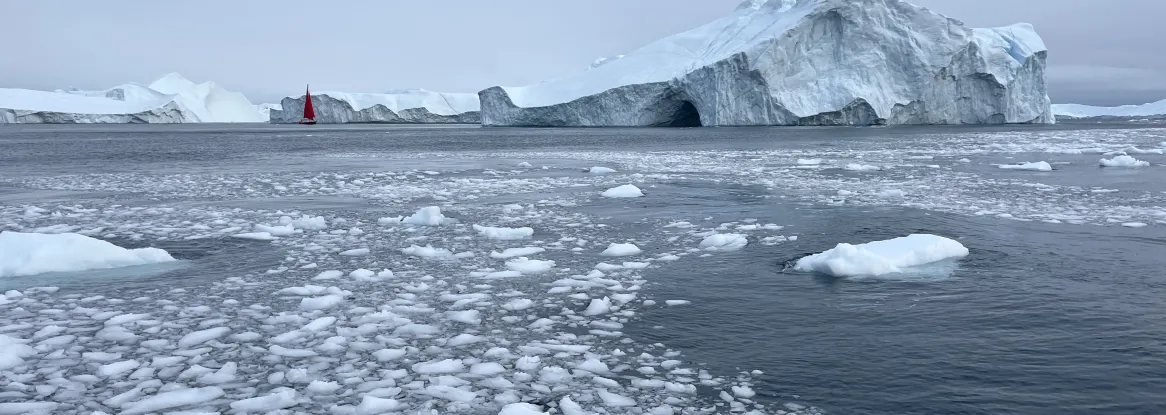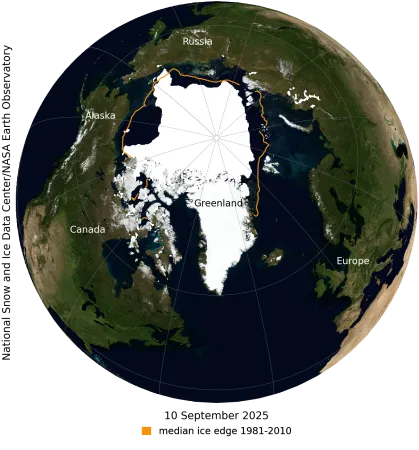Arctic sea ice has likely reached its minimum extent for the year, at 4.60 million square kilometers (1.78 million square miles) on September 10, 2025, according to scientists at the National Snow and Ice Data Center (NSIDC) at the University of Colorado Boulder. The 2025 minimum is ranked tenth lowest in the 47-year satellite record. The last 19 years are the lowest 19 Arctic sea ice extents in the satellite record.
"This year is yet another low extent for Arctic sea ice," said senior scientist Walt Meier. "While not a record low, it is consistent with an Arctic sea ice environment that is fundamentally changed from two decades ago.”
NSIDC scientists stress that the Arctic sea ice extent number is preliminary—continued melt conditions could still push the ice extent lower. NSIDC will issue a full analysis at the beginning of October addressing the possible causes behind this year’s ice conditions, interesting aspects of the melt season, the set up going into the winter growth season ahead, and graphics comparing this year to the long-term record.
NSIDC is part of the Cooperative Institute for Research in Environmental Sciences (CIRES) at the University of Colorado Boulder. NASA, in part, supports NSIDC’s Sea Ice Today website.
Visit NSIDC's Sea Ice Today for more details and images.
View the NASA visualization; read the NASA feature.

